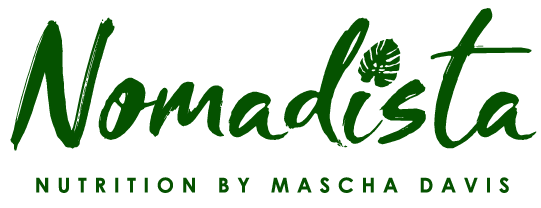You know how much I love chatting about why we should all eat more seafood and today's post is going to go over exactly why seafood is so important for our largest organ, the skin!
6 nutrients in seafood that make it a superfood for your skin:
1) High quality protein
Seafood is an excellent source of protein which is an essential nutrient for tissue growth, development and rejuvenation. The body takes the protein you consume and breaks it down into amino acids, which are reused to form collagen and keratin, which are the structural components of the skin. Protein intake is also important to help the body get rid of old, damaged skin cells and create new ones.
2) Omega 3 fatty acids
Before we dive deep into chatting about how omega-3s are great for skin, it’s important to note that not all omega 3-s are the same! There are actually three main types. All omega-3s are polyunsaturated fats, but they can be further classified into:
EPA (eicosapentaenoic acid) and DHA (docosahexaenoic acid), which both come from fatty fish. EPA and DHA are called essential fatty acids because the body can’t produce them on it’s own, which is why we need to obtain adequate amounts from marine sources (like seafood).
ALA (alpha-linolenic acid) are the omega-3s found in plant foods (vegetable oils, walnuts, flaxseed, hemp seeds, soybeans). Unfortunately, ALA omega-3s are not the active form of the fatty acid and therefore can’t be used by the body in the same way as EPA or DHA. To reap the same health benefits, ALA has to be converted in EPA and DHA, but this conversion rate is relatively low. For example, this study found that only ∼2 to 10% of ALA is converted to EPA or DHA.
So the general takeaway here is that seafood is really one of the FEW sources of EPA and DHA omega 3-s (the kind that are best used within the body!)
Now, the reason why omega-3s are important for your skin is because they help to decrease inflammation in the body, which helps your skin not look so red and puffy. The fish with the highest source of omega 3-s include trout, salmon, mackerel, herring, and sardines.
3) Zinc
Zinc is an important mineral found in seafood (especially oysters, crabs and lobsters) that has been shown to help with inflammatory skin conditions including rosacea and dermatitis. Like omega 3-s, zinc can help to reduce inflammation and is especially important for wound healing.
4) Vitamin A
Vitamin A found in seafood like tuna, salmon, and herring is an essential nutrient that supports skin health. When vitamin A is consumed, it is converted to retinol in the liver and then used to facilitate the production of new skin cells. If we didn’t have any retinol, our skin would get extremely dry. Research shows that a diet high in carotenoids (a form of vitamin A) has potential to protect the skin against aging and skin disease.
5) Vitamin E
Seafood including atlantic salmon, rainbow trout, lobster, octopus and crayfish are all good sources of vitamin E. This nutrient has strong antioxidant properties that strengthen the skin's barrier. Antioxidants work to reverse cellular damage caused by things like UV exposure.
6) Vitamin B3
Vitamin B3, also known as niacin, is found in seafood like salmon and tuna. Niacin deficiency leads to a serious skin condition called pellagra, which causes inflammation and dermatitis in the skin along with other symptoms like diarrhea and neurological defects. However, not to worry! Niacin deficiency is not common in the US due to fortification of foods. However, it is important to know how essential this nutrient is and that you can get even more of it from seafood!
How to get in more seafood:
Now that you understand why seafood is a superfood for your skin, the next step is figuring out how to add more into your daily intake. If you are new to seafood, I recommend starting small and swapping out 2 meals a week for a seafood substitute.
For example you can
Choose salmon over steak for dinner
Add canned tuna, salmon, or a Mini Fish packet to your salad
Have a tuna sandwich or wrap for lunch
Try a shrimp stir fry
Snack on Mini Fish with whole grain crackers
Grill fish and add it to tacos
Add shell fish to whole wheat pasta
So, before you go and buy more expensive beauty products to fix your skin, think about making changes to your diet first. By adding in seafood at least 2x/week you’ll be on the path to reaping the benefits above that will help support your glowing skin!




